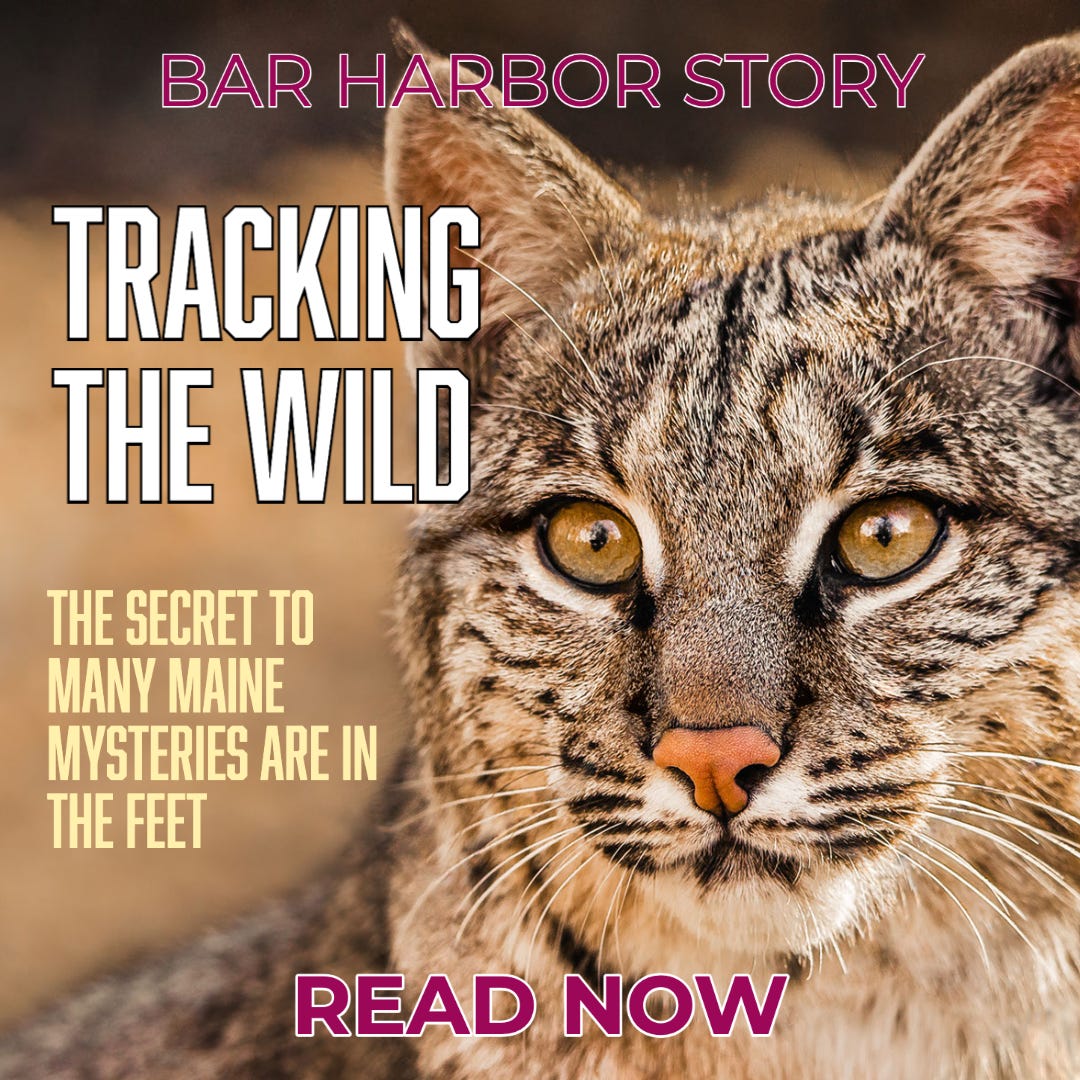BAR HARBOR—There are still mysteries in this town and some? Some you can actually solve. Just by stepping outside your front door in Bar Harbor, mystery can confront you. Maybe it’s before you shoveled and when you look down the imprint in the snow shows there was something there in that snow before you. Maybe it’s mud season and the wind blasts past you as you hike your way up Champlain and there, just off trail, is an animal sign that you just don’t recognize.
What has been there on the trail, on your lawn, on your driveway, before you is often a mystery that people want to solve. They’ll take pictures, post them on social media. The answers will come back all over the place. It’s a cat. It’s a coyote. It’s a mink. It’s a deer.
Sandra Mitchell, certified tracker, Maine guide and Maine master naturalist is all about solving the mysteries in the snow and the mud and the dirt. She trained via Cybertracker, an international organization that certifies different levels of trackers. The organization began in Africa before spreading to the United States and Europe.
“Ever see something like this in the woods and wonder what animal created it?” Mitchell asked during a presentation sponsored by the Blue Hill Heritage Trust and the Island Heritage Trust. “How about what they were actually doing at the time?”
Many of us don’t know where to start solving the mystery, she said. Practice, patience and careful observation are the tools to help solve the mystery. Those traits aren’t usually in high amounts on social media.
“It’s super important to step back, take away all your judgements and your preconceived notions and see what’s really there,” Mitchell said.
There are steps to solving the puzzle. You first look at the habitat, then count the toes, measure the track, try to identify the gait, measure the parameters of the gait. And the story behind the mystery becomes more and more clear.
Toes, she said, are one of the major differentiating factors in mammal identification. The number of toes, their orientation, and how they use those toes helps understand “how the animals make a living.” When you measure the track, you want to measure the floor or bottom of the track to be more accurate.
“Feet are the window of the world of the animal and how they make their living,” Mitchell said.
The feet adapt to the habitat. Compact and hard toes lend to desert. Pads and fur that are stealth help for ambushing prey. Feet with long claws are helpful for digging and climbing.
The Cybertracker website writes, “The Art of Tracking may well be the origin of science. After hundreds of thousands of years, traditional tracking skills may soon be lost. Yet tracking can be developed into a new science with far-reaching implications for indigenous communities, citizen science and nature conservation.”
iTrack Wildlife and iNaturalist are decent online sources and apps for helping you solve the mystery, Mitchell said.
Fast facts from Mitchell
Cat tracks in general are round shape and have a leading toe, one toe that sticks up more than the others. The claws aren’t always visible, but they are sometimes. The paw pad itself has three lobes.
Bobcats like to stay undercover, but they won’t always. They like logging roads. They like trails. Their hind foot lands almost exactly in the shadow of the front foot. This is called direct register.
Coyotes don’t meander like house dogs and that shows up in their tracks. Coyotes tend to have an agenda. They don’t amble and smell every fire hydrant. They move more in a straight way.
Their feet are longer than wide. So the tracks are egg shaped. They are direct walkers and they usually trot. You usually can see their nails. You can usually see four toes and no toe leads. There is often more than one coyote traveling.
Red foxes have a side track and a lot of fur that makes the track a bit more muddled a lot of the time. There is often a chevron or flat bar in the pad of a red fox track.
Grey fox with their shorter legs have a straddle trot where the hind leg rotates.
Porcupines almost always walk. It looks a bit like they are dragging a toboggan. There’s a deep groove between the prints.








